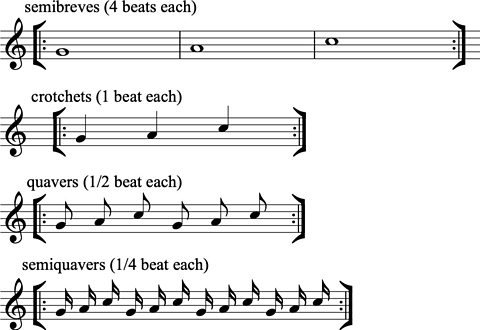
For:
- Key Stage 3 in England and Wales
- Third/Fourth Level, S1-S3 in Scotland
- Key Stage 3 in Northern Ireland
You can also download the lesson plans as a PDF with accompanying powerpoint slides.
Written by Rachel Leach
Background
The composer: Hans ZIMMER (b. 1957)
- German film composer
- Has composed more than 150 films scores and been nominated for ten Oscars
- Is self-taught
- Loves using technology, synthesizers, samplers and computers as well as the orchestra

The music: Earth
- Written especially for │╔╚╦┬█╠│ Ten Pieces
- Draws upon the soundworld he used for тАШтАЩBlue Planet IIтАЩ and тАШPlanet Earth IIтАЩ тАУ two of his most popular scores
- This isnтАЩt a film score (it wasnтАЩt written for a movie) but it does sound very тАШfilmicтАЩ
Trailblazer: Film composer Hans Zimmer uses all sorts of different techniques to create music. He has helped shape the sound of todayтАЩs film, tv and games music.
Learning outcomes
Learners will:
- listen and reflect on a piece of orchestral music
- create their own piece of music using instruments and voice
- perform as an ensemble
- learn musical language appropriate to the task
Explore and download lesson plans for six weeks of learning and activities for Earth by Hans Zimmer.

Curriculum checklist:
- listen with increasing discrimination to a wide range of music from great composers and musicians
- play and perform confidently in a range of solo and ensemble contexts using voice, playing instruments fluently and with accuracy and expression
- improvise and compose; and extend and develop musical ideas by drawing on a range of musical structures, genres and traditions
Glossary of music terms used:
- Crescendo - gradually getting louder (opposite: decrescendo or diminuendo)
- Duration - the length of a note. Different durations make rhythms
- Dynamics - the term used for louds and softs/volume
- Leitmotif - a short musical idea that represents a character/place/mood/theme on screen
- Pianissimo - very softly
- Pitched percussion - percussion instruments that can play different pitches тАУ xylophones, glockenspiels, chime bars, etc.
- Unpitched percussion - percussion instruments that can only make a limited number of sounds тАУ drums, shakers, woodblocks, tambourines, etc.
Glossary terms can be found in bold throughout.
Resources required:
- classroom percussion instruments
- filming equipment and editing software* тАУ for example, the camera on a smart phone/tablet
- access to the internet and Youtube*
*If not available, skip lesson 2
This scheme of work is plotted out over six weeks. Feel free to adapt it to suit your children and the resources you have available.
Explore and download powerpoint slides for six weeks of learning and activities for Earth by Hans Zimmer.

The six lessons at a glance
Lesson 1:
Activities:
- Watch the film
- Analyse the music
Curriculum link:
- Listen with increasing discrimination to a wide range of music from great composers and musicians
- Identify and use the interrelated dimensions of music expressively and with increasing sophistication, including use of tonalities, different types of scales and other musical devices
- Develop a deepening understanding of the music that they perform and to which they listen, and its history
Lesson 2:
Activities:
- Make or find a film and edit existing music to it
Curriculum link: n/a
Lesson 3:
Activities:
- Learn to play a shimmer, create vocal melodies
Curriculum link:
- Play and perform confidently in a range of solo and ensemble contexts using voice, playing instruments fluently and with accuracy and expression
- Improvise and compose; and extend and develop musical ideas by drawing on a range of musical structures, genres and traditions
Lesson 4:
Activities:
- Create three-note repeating patterns and play with different durations
- Use musical terminology and notation
Curriculum link:
- Play and perform confidently in a range of solo and ensemble contexts using voice, playing instruments fluently and with accuracy and expression
- Improvise and compose; and extend and develop musical ideas by drawing on a range of musical structures, genres and traditions
Lesson 5:
Activities:
- Learn about and create leitmotifs
Curriculum link:
- Play and perform confidently in a range of solo and ensemble contexts using voice, playing instruments fluently and with accuracy and expression
- Improvise and compose; and extend and develop musical ideas by drawing on a range of musical structures, genres and traditions
Lesson 6:
Activities:
- Structure musical idea to fit to film
- Perform live to picture or in a concert
Curriculum link:
- Develop a deepening understanding of the music that they perform and to which they listen, and its history
- Play and perform confidently in a range of solo and ensemble contexts using voice, playing instruments fluently and with accuracy and expression
- Improvise and compose; and extend and develop musical ideas by drawing on a range of musical structures, genres and traditions

LESSON 1 - Watching and listening
- Prepare your class
Explain to your class that you are going to begin a six-week music project focusing on a fantastic piece of music by a film composer called Hans Zimmer. Tell your class that they probably already know ZimmerтАЩs music; he wrote the scores for тАШBlue Planet IIтАЩ, тАШDunkirkтАЩ, тАШPlanet Earth IIтАЩ, тАШThe Lion KingтАЩ and many, many other films and tv shows.
Watch the trailblazers film and orchestral performance and have a discussion about what you have just seen.
Listening task
Watch and listen to the full performance again and ask your students to make a list of what they are hearing. Make sure there is a clock or stopwatch on the screen too so that they can note down the time at which events occur.
HereтАЩs a useful table you might like to copy, and some example answers:
Naomi Wilkinson introduces this piece Earth, written especially for Ten Pieces by the world-famous trailblazer Hans Zimmer. Hans talks all about what has inspired him to write this piece.

The │╔╚╦┬█╠│ Scottish Symphony Orchestra and the Royal Scottish National Orchestra Junior Chorus perform Earth by Hans Zimmer.
Split your class into smaller working groups. Ask them to share their ideas and come up with one definitive list.
Using this list of events, ask each group to plot out the images they would see on screen if this music were a film score. They can do this by adding an extra column to the diagram like this:

- FINALLY, when this is achieved, encourage each group to share their thoughts with the rest of the class and lead a short discussion. Keep their work safe, you will need it during the next lesson.

LESSON 2 - Make the film to fit the music
This lesson is all about making images to go with ZimmerтАЩs music. Your students should continue working in their small groups and referring to their тАШstoryboardтАЩ but there are two ways to proceed. Choose the option that best fits the resources you have available. If you donтАЩt have such resources, simply skip this lesson or make live images to fit ZimmerтАЩs music!
Option 1: shoot film
Each team needs film recording equipment. This could be a digital camera, video recorder or even a smart phone or tablet. Using places within the school and its grounds teams must find, stage and shoot the images listed on their storyboard.
Teams can then edit their images to ZimmerтАЩs music using whatever software you have available.
Many operating systems come with their own editing software (for example iMovie) but free software is available to download (for example Wondershare Filmora). Video can also be edited on smart phones/tablets and then uploaded into music editing software such as Garageband, Logic, Sibelius.
Option 2: find film
Use the internet to source film clips (i.e. YouTube) and edit these to ZimmerтАЩs music. The easiest way to do this is to simply find existing edited films and try them alongside ZimmerтАЩs music. A good place to start would be clips from films to which Zimmer has already written the music (тАШBlue PlanetтАЩ, тАШPlanet EarthтАЩ, etc.). Many such films are available on YouTube.
Your students could also edit existing film clips together to make a new film. To do this the clips must first be uploaded into your editing software. Again, free downloads are available (see above).

LESSON 3 - Recreating Zimmer - atmosphere
- Warm-up
Begin with your class sitting in a circle. Ask the students to close their eyes and listen. When you have absolute silence make a very soft shimmery sound by quickly tapping your fingers on your knees. Stop and ask everyone if they heard the shimmering sound. Perhaps students sat right across the circle from you wonтАЩt have heard it so repeat the activity and this time, ask students to join in with the sound when they hear the person next to them. Your shimmer will then gradually spread around the circle. Challenge your class to stop when the person next to them stops too (this is much harder!).
Explain that you have just made a тАШshimmerтАЩ тАУ similar to the sound at the beginning of ZimmerтАЩs piece.
Look at your instrument collection. Ask the students to suggest some unpitched instruments to join in with the shimmer тАУ these could be instruments capable of making a soft, continuous sound or capable of being played in such a way (i.e. a drum can be tapped lightly with the fingers instead of hit with a beater). Add some of these suggestions to your class shimmer.
Now try adding some pitched instruments. Use these notes:

Remind your class to keep their shimmer as quiet as possible. The technical term for this is тАШpianissimoтАЩ. Should they all shimmer at the same time or should they stagger the entries of the different types of shimmer?
- Now itтАЩs time to add some singing to your shimmer. Zimmer makes a series of short melodies by selecting just three or four pitches from this scale:

Feel free to adapt these notes to suit the instruments you have and the ability of your young musicians.
Teach these notes to your students тАУ they can play them on instruments and/or sing them. Ask a volunteer to invent a short fragment of melody by choosing just three or four pitches and putting them in an order. Write this on the board and encourage half of your circle to sing and play it slowly. Everyone else can continue with the shimmer.
ZimmerтАЩs opening melody is this for example:

- Split the class back into their groups and ask each team to invent at least two short melodies using the method above. Their resulting piece should have this structure:
- Soft shimmer throughout
- Short melodies alternate back and forth
- Lots of space and stillness
- FINALLY, bring the class back together and hear each group one by one. Give gentle feedback and encourage your students to carefully write down what they have done. They will return to this later.

LESSON 4 - Recreating Zimmer тАУ three-note patterns
Warm-upRepeat the warm-up from the last lesson and then talk and sing through your тАШshimmering introductionтАЩ. Get the instruments out and play through it making sure that everyone has the same instrument as last week.
Remind your class that ZimmerтАЩs piece gets a bit тАШbusierтАЩ during the middle. Zimmer uses just three pitches during this section. Ask your class to choose three notes from the following scale:

For example, your students may choose G, A, C тАУ make sure that everyone with a pitched instrument can play the chosen pitches.
This is the same set of notes you used for the melodies in the last lesson.
- Practise playing through your chosen notes encouraging everyone who has a pitched instrument to play each note as follows:

Students with unpitched instruments can help with counting or provide a gentle pulse to keep everyone together.
This is a great way to introduce some technical terms or to begin teaching notation. These patterns are all different lengths, just like in ZimmerтАЩs piece. This is so that every repeat creates a different collision of notes. The technical term for this is phasing.
- Explain
Zimmer has all of these different note lengths (durations) layered up in his piece. Split the class into smaller groups and challenge each team to make a piece that layers up these different patterns. Unpitched players may add infrequent rumbles and surprises to the texture.
- FINALLY, - bring the class back together and hear each group one by one giving some gentle feedback as you go through. Again, make sure the students write down what they have done and who played which element.

LESSON 5 - тАШLife on EarthтАЩ leitmotifs
- Warm-up
Begin this lesson by leading a quick brainstorming activity. Ask your students to think of things associated with planet earth and make a huge list on the board. These can be descriptions of landscape life on the planet or even scientific facts.
Split the class back into their smaller working groups. Ask each group to choose three things from the list on the board making sure that, if possible, each group chooses something different from the others.
Ask each group to make a leitmotif to represent each of the things on their list. A musical motif that describes something (usually in a film or opera) is called a leitmotif. It can be a rhythm, a collection of notes or even a sound effect. Encourage your students to keep their motifs short and simple, and to use the same instruments they have been using so far on the project.
Challenge each group to make a short piece from their leitmotifs. They could use the following questions to guide them:
- What goes first?
- What goes last?
- Do any of the leitmotifs fit together?
- Do the leitmotifs overlap, transform or repeat?
- FINALLY, hear each group one by one and again give some feedback. If you have time, allow the groups five minutes to recap the other two sections of music they have made (the shimmering intro and the three note patterns).

LESSON 6 - тАШSpotтАЩ a film, perform to picture
This lesson is about creating music for film. Ideally you will return to the films that were found or created in lesson 2. You can however do this task with any film clip, simply choose a clip with a lot of action and mute the sound. Again, a stopwatch on the screen will help.
Explain to your students that the next two lessons will be about creating new music for film. When composers are commissioned to write music for film they sit down with the director and watch it without music in a process called тАШspottingтАЩ. During this viewing they list the events, actions and emotions that require music alongside the time at which they occur. Then together, the composer and director agree on where the music will be placed and what style it will have.
There are five commonly used types of film music, as follows:
- DIEGETIC тАУ sounds/music that can be heard by the characters within the film as well as the audience
- FOLEY тАУ sound effects, non-musical sounds
- MICKEY MOUSING тАУ opportunities for music to perfectly mimic the action as in cartoons (musical footsteps, etc.)
- ATMOSPHERE тАУ created by music alone. Sometimes called тАШunderscoreтАЩ
- LEITMOTIF тАУ small motifs that represent a specific character/place/emotion/theme
- Play your chosen film clip to the class without sound. Ask them to note down everything including characters, events, actions, emotions, scenery, and to note alongside these events the exact time at which they occur. They could use this table:

Working in your small groups again, ask each team to collate their ideas and come up with one list.
Challenge each group to use this list to help structure all of the musical ideas they have made so far (the shimmering intro, the three-note patterns and their тАШearthтАЩ leitmotifs) into one piece that fits with the film. Allow them the rest of the lesson to do this and make sure that each group can see the film they are playing to as they work. Give them a deadline of ten minutes before the end of the lesson to have their music completed.
FINALLY, ask each group to perform their live film score to picture. You might like to invite an audience in to watch or you could simply record these performances and perhaps edit them back onto the films later.

TAKING IT FURTHER - Cross-curricular activities
MUSIC: Explore the other planets with HolstтАЩs Planet Suite. Mars features on │╔╚╦┬█╠│ Ten Pieces.
MUSIC: Zimmer has a lot in common with another │╔╚╦┬█╠│ Ten Pieces composer тАУ Delia Derbyshire. She created the theme to тАШDoctor WhoтАЩ. Zimmer has made many tv themes and like Delia, he is a huge fan of electronic music.
FILM: Watch some of Hans ZimmerтАЩs greatest film music moments and have a go at creating your own film music by muting the sound and playing your new compositions on top. тАШBlue PlanetтАЩ and тАШPlanet EarthтАЩ are good places to start.
UPLOAD: Show us what youтАЩve created! Submit your creative responses using our Uploader for a chance to be featured on the Ten Pieces website.
Upload and showcase your creative responses
Upload your creative responses to the Ten Pieces repertoire for your chance to feature in the Ten Pieces creative showcase.
